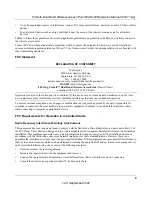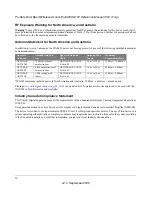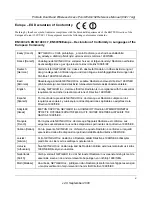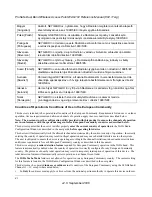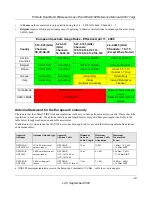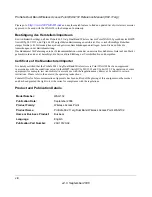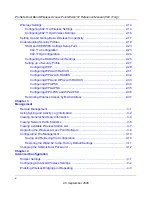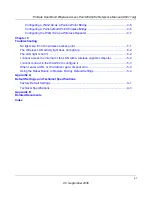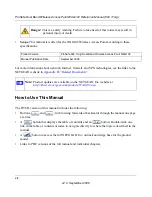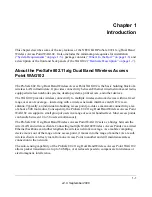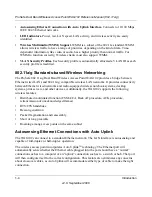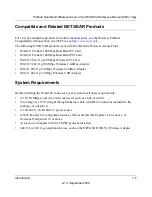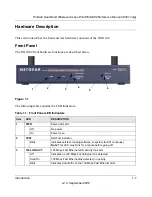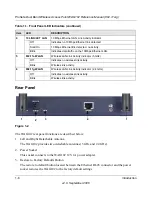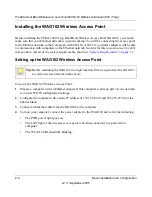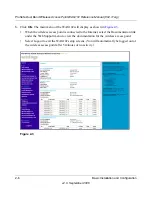
1-1
v2.0, September 2006
Chapter 1
Introduction
This chapter describes some of the key features of the NETGEAR ProSafe 802.11a/g Dual Band
Wireless Access Point WAG102. It also includes the minimum prerequisites for installation
(
“System Requirements” on page 1-5
.), package contents (
“What’s In the Box?” on page 1-6
) and
a description of the front and back panels of the WAG102 (
“Hardware Description” on page 1-7
).
About the ProSafe 802.11a/g Dual Band Wireless Access
Point WAG102
The ProSafe 802.11a/g Dual Band Wireless Access Point WAG102
is the basic building block of a
wireless LAN infrastructure. It provides connectivity between Ethernet wired networks and radio-
equipped wireless notebook systems, desktop systems, print servers, and other devices.
The WAG102 provides wireless connectivity to multiple wireless network devices within a fixed
range or area of coverage—interacting with a wireless network interface card (NIC) via an
antenna. Typically, an individual in-building access point provides a maximum connectivity area
of about a 500 foot radius. Consequently, the ProSafe 802.11a/g Dual Band Wireless Access Point
WAG102 can support a small group of users in a range of several hundred feet. Most access points
can handle between 10 to 30 users simultaneously.
The ProSafe 802.11a/g Dual Band Wireless Access Point WAG102 acts as a bridge between the
wired LAN and wireless clients. Connecting multiple WAG102 Wireless Access Points via a wired
Ethernet backbone can further lengthen the wireless network coverage. As a mobile computing
device moves out of the range of one access point, it moves into the range of another. As a result,
wireless clients can freely roam from one Access Point to another and still maintain seamless
connection to the network.
The auto-sensing capability of the ProSafe 802.11a/g Dual Band Wireless Access Point WAG102
allows packet transmission at up to 54 Mbps, or at reduced speeds to compensate for distance or
electromagnetic interference.

